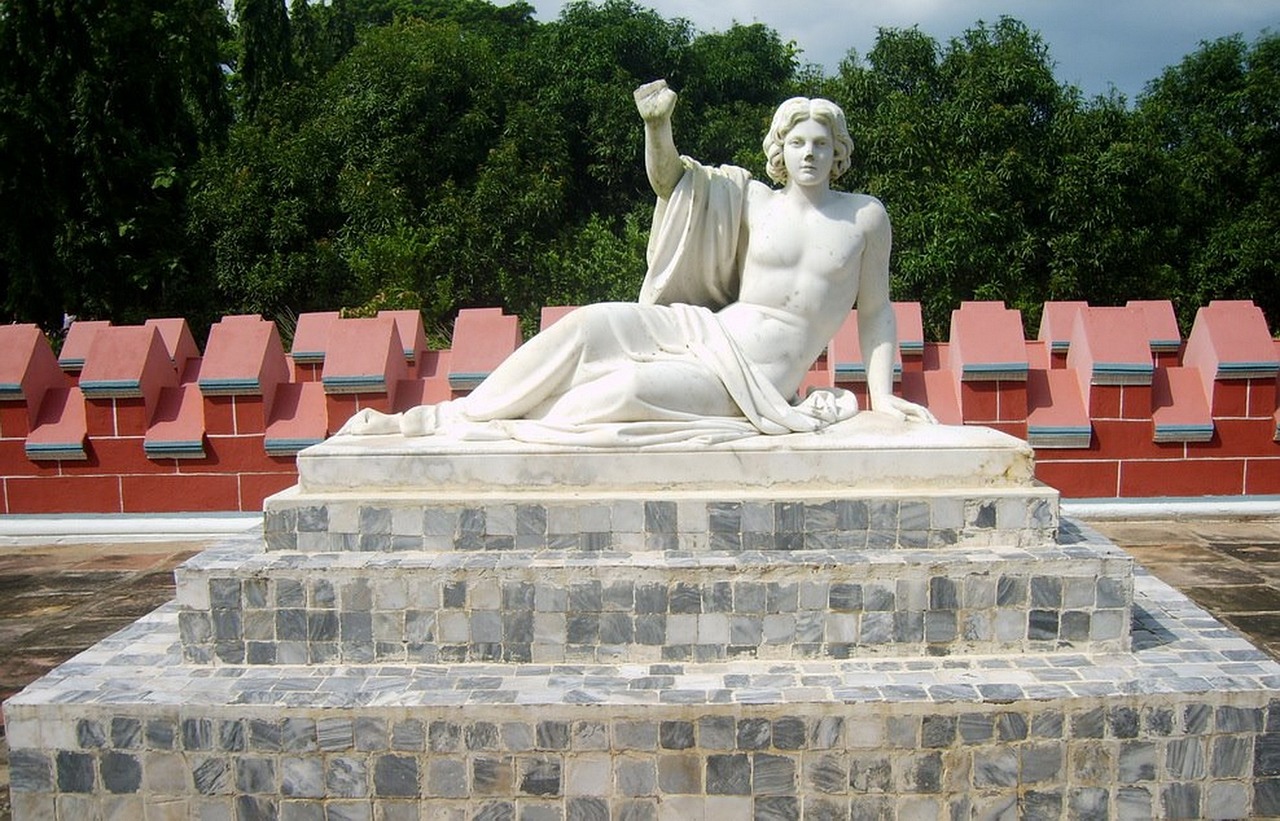This article delves into the fascinating history of Howrah Railway Station, its architectural significance, and its role in the evolution of Indian railways, offering insights into its cultural and economic impact.
The Origins of Howrah Railway Station
Inaugurated in 1854, Howrah Railway Station has a storied past. It was established to connect Kolkata with the rest of India, marking a significant milestone in railway history. As one of the oldest railway stations in India, it has witnessed the evolution of the railway system and has played a pivotal role in shaping the transportation landscape of the country.
Architectural Marvel: Design and Structure
The station’s design combines Gothic and Indo-Saracenic architectural styles, showcasing intricate details that reflect the era’s aesthetic. Its grand façade and spacious platforms make it a landmark of engineering excellence.
- Key Architectural Features: The station features a striking clock tower, high ceilings, and expansive waiting areas, all contributing to its reputation as one of the busiest railway stations in India.
- Innovative Engineering Techniques: The construction utilized advanced engineering techniques for its time, enabling the station to accommodate the growing number of passengers and trains efficiently.
- Preservation of Historical Elements: Efforts have been made to preserve the station’s historical elements, ensuring that its architectural integrity remains intact while accommodating modern facilities.
Howrah Railway Station: A Cultural Hub
Beyond transportation, Howrah Railway Station serves as a cultural hub, reflecting the diverse heritage of Kolkata through art, food, and local traditions.
- Art and Culture at the Station: The station is often a showcase for local artists, with various cultural events and exhibitions held in its vicinity, enriching the travel experience for passengers.
- Culinary Delights: Travelers can indulge in authentic Bengali cuisine at food stalls around the station, offering a taste of Kolkata’s rich culinary heritage.
The Role of Howrah Railway Station in Indian Railways
As a critical junction in the Indian Railways network, Howrah Railway Station plays a vital role in connecting the eastern region with the rest of the country.
- Passenger Traffic and Connectivity: Handling millions of passengers annually, the station is one of the busiest in India, highlighting its importance in the national transportation system.
- Impact on Economic Growth: The station’s strategic location has significantly contributed to Kolkata’s economic development, facilitating trade and commerce across various sectors.
Challenges and Future Developments
Despite its historical significance, Howrah Railway Station faces challenges such as overcrowding and infrastructure maintenance, prompting ongoing discussions about future developments.
- Modernization Efforts: Plans for modernization aim to enhance passenger amenities while preserving the station’s historical character, ensuring it meets the needs of contemporary travelers.
- Community Engagement and Feedback: Engaging with the local community is crucial for the station’s development, as their insights can help shape future improvements and initiatives.
Conclusion: The Legacy of Howrah Railway Station
Howrah Railway Station stands as a testament to India’s rich railway heritage, embodying the evolution of transportation while remaining a vibrant part of Kolkata’s cultural landscape. Its historical significance, architectural beauty, and cultural relevance make it a symbol of pride for the city and the nation.
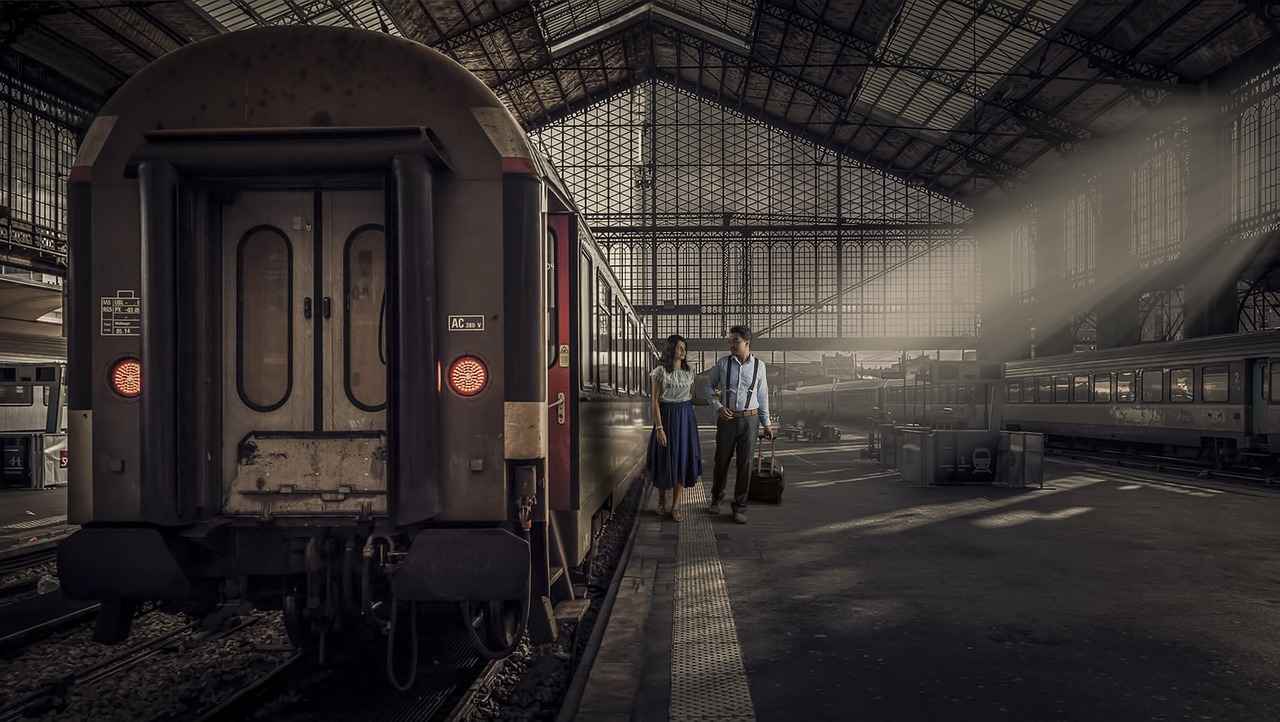
The Origins of Howrah Railway Station
Exploring the Rich History of Howrah Railway Station
Howrah Railway Station, inaugurated in 1854, stands as a testament to the evolution of India’s railway network. Established to connect Kolkata with the rest of India, it marked a significant milestone in railway history. This bustling hub not only serves as a critical transportation link but also reflects the rich cultural heritage of the region.
Howrah Railway Station was built during a time when the railways were beginning to transform the landscape of transportation in India. The station was designed to facilitate the movement of goods and passengers, significantly enhancing connectivity between Kolkata and various parts of the country. Its establishment was pivotal in promoting trade and commerce, thereby contributing to the economic growth of the region.
Architectural Marvel: Design and Structure
The station’s architecture is a blend of Gothic and Indo-Saracenic styles, showcasing intricate details that reflect the artistic sensibilities of the time. The grand façade, complemented by spacious platforms, makes it a landmark of engineering excellence. Its striking clock tower and high ceilings are among the key features that attract visitors and architecture enthusiasts alike.
Howrah Railway Station: A Cultural Hub
Beyond its role as a transportation center, Howrah Railway Station serves as a cultural hub. It reflects the diverse heritage of Kolkata through various art forms and local traditions. Travelers can experience authentic Bengali cuisine at food stalls surrounding the station, offering a taste of the region’s rich culinary heritage.
The Role of Howrah Railway Station in Indian Railways
As a vital junction in the Indian Railways network, Howrah Railway Station handles millions of passengers annually, underscoring its importance in the national transportation system. Its strategic location has significantly contributed to Kolkata’s economic development, facilitating trade and commerce across various sectors.
Challenges and Future Developments
Despite its historical significance, Howrah Railway Station faces challenges such as overcrowding and infrastructure maintenance. Ongoing modernization efforts aim to enhance passenger amenities while preserving the station’s historical character, ensuring it meets the needs of contemporary travelers.
Conclusion: The Legacy of Howrah Railway Station
Howrah Railway Station remains a vibrant part of Kolkata’s cultural landscape, embodying the evolution of transportation in India. Its rich history and architectural grandeur continue to inspire awe, making it an integral part of the city’s identity.

Architectural Marvel: Design and Structure
The Howrah Railway Station is a remarkable blend of architectural styles, primarily influenced by Gothic and Indo-Saracenic designs. This fusion creates a unique aesthetic that captivates visitors and serves as a testament to the engineering prowess of its time.
One of the most striking features of the station is its grand façade, adorned with intricate carvings and decorative elements that reflect the cultural heritage of India. The use of red brick and stone not only enhances its visual appeal but also contributes to its structural integrity, allowing it to withstand the test of time.
The spacious platforms are designed to accommodate a high volume of passengers, showcasing the station’s role as a vital transportation hub. With high ceilings and expansive waiting areas, the station ensures comfort and convenience for travelers. The clock tower, a prominent landmark, stands tall as a symbol of the station’s historical significance and engineering excellence.
In terms of engineering techniques, the construction of Howrah Railway Station utilized advanced methods for its era, including the use of steel trusses and reinforced concrete. These innovations enabled the station to efficiently manage the growing number of trains and passengers, making it one of the busiest railway stations in India.
Moreover, efforts to preserve the historical elements of the station are ongoing. This includes maintaining its architectural integrity while integrating modern facilities to enhance the passenger experience. The balance between preserving history and embracing modernity is crucial for the station’s future.
In conclusion, the architectural design and structure of Howrah Railway Station not only highlight its significance in the railway network but also reflect the rich cultural tapestry of India. Its continued relevance in today’s world makes it a landmark of engineering excellence and a cherished heritage site.
Key Architectural Features
Howrah Railway Station, an iconic landmark in India, boasts a variety of architectural features that contribute to its status as one of the busiest railway stations in the country. Among its most striking elements is the towering clock tower, which serves not only as a functional timepiece but also as a symbol of the station’s historical significance. This impressive structure stands tall, visible from various points around the station, and is often a focal point for both travelers and photographers alike.
The station’s high ceilings create a sense of spaciousness, allowing for better ventilation and natural light, making the waiting areas more comfortable for the millions of passengers who pass through each year. This architectural choice reflects a design philosophy aimed at enhancing the traveler experience, ensuring that the station is not just a transit point but a welcoming space.
In addition to the clock tower and high ceilings, the station features expansive waiting areas that are meticulously designed to accommodate large crowds. These waiting areas are equipped with various amenities, including seating, information boards, and food stalls, catering to the needs of travelers. The thoughtful layout of these spaces allows for efficient passenger flow, reducing congestion during peak hours.
Furthermore, the intricate detailing found throughout the station’s façade showcases a blend of Gothic and Indo-Saracenic architectural styles, reflecting the rich cultural heritage of India. This combination of styles not only adds aesthetic appeal but also tells a story of the historical influences that have shaped the station over the years.
Overall, the architectural features of Howrah Railway Station are not merely functional; they embody the station’s legacy and its role as a vital hub in India’s railway network. As such, they continue to attract visitors and serve as a reminder of the station’s historical and cultural significance.
Innovative Engineering Techniques
The construction of Howrah Railway Station marked a pivotal moment in the realm of railway engineering, showcasing innovative techniques that were ahead of their time. This architectural feat was not merely about aesthetics; it was a calculated response to the burgeoning demand for railway services in the mid-19th century. With a vision to accommodate a rapidly increasing number of passengers and trains, engineers employed several groundbreaking methods that set a new standard for railway stations globally.
One of the most notable advancements was the use of steel frameworks, which allowed for larger and more open spaces within the station. This innovation facilitated the creation of wide platforms and high ceilings, ensuring that the station could handle the influx of travelers efficiently. The incorporation of reinforced concrete in the construction process also enhanced the durability of the structure, allowing it to withstand the test of time and the heavy foot traffic typical of such a busy transport hub.
Moreover, the station’s design included sophisticated drainage systems to manage rainwater effectively, preventing flooding and ensuring passenger safety. This was particularly important given the monsoon climate of Kolkata. Additionally, the strategic layout of the station, with its multiple entry and exit points, was designed to streamline passenger flow and minimize congestion, a challenge that many stations faced during that era.
Furthermore, the integration of modern signaling systems within the station’s operations allowed for improved train scheduling and safety. This was crucial in managing the growing network of railway lines that converged at Howrah, making it a vital junction in India’s railway system.
In conclusion, the innovative engineering techniques employed in the construction of Howrah Railway Station not only addressed the immediate needs of its time but also laid the groundwork for future advancements in railway infrastructure. As a result, it continues to serve as a testament to the ingenuity and foresight of its creators, accommodating millions of passengers annually while preserving its historical essence.
Preservation of Historical Elements
Howrah Railway Station, a vital piece of India’s transportation history, has undergone significant efforts to maintain its historical elements. These initiatives are crucial in ensuring that the station not only retains its architectural integrity but also serves the modern needs of its users.
The preservation process involves a careful balance between modernization and conservation. Key historical features, such as the grand façade and intricate detailing, have been meticulously restored to reflect their original glory. This commitment to preservation is evident in the restoration of the clock tower and the maintenance of the high ceilings that characterize the station’s design.
- Architectural Integrity: The station’s design, which blends Gothic and Indo-Saracenic styles, is preserved through regular maintenance and restoration efforts.
- Modern Facilities: While historical elements are prioritized, modern amenities are integrated seamlessly, ensuring a comfortable experience for travelers.
- Community Involvement: Engaging local historians and architects in the preservation process has fostered a sense of ownership and pride among the community.
Moreover, the preservation efforts extend beyond just the physical structure. Educational programs and guided tours have been initiated to raise awareness about the station’s cultural significance. These initiatives not only inform the public about the station’s rich history but also encourage a deeper appreciation for its architectural beauty.
In conclusion, the ongoing efforts to preserve the historical elements of Howrah Railway Station demonstrate a profound respect for the past while embracing the future. This dual commitment ensures that the station remains a vital part of Kolkata’s cultural landscape, serving generations of travelers to come.
Comparative Analysis: Other Major Stations
When we compare Howrah Railway Station with other prominent railway stations in India, such as Mumbai’s Chhatrapati Shivaji Maharaj Terminus (CST) and New Delhi Railway Station, we uncover a tapestry of unique features, historical significance, and architectural marvels that define each station’s character.
Historical Significance
- Howrah Railway Station, inaugurated in 1854, is one of the oldest and busiest railway stations in India, serving as a crucial link between Kolkata and the rest of the country.
- CST, a UNESCO World Heritage Site, showcases the Indo-Saracenic architectural style and was completed in 1888, symbolizing Mumbai’s importance as a commercial hub.
- New Delhi Railway Station, established in 1926, is a vital junction in the Indian Railways network, connecting the capital to various regions, and features a blend of modern and colonial architectural styles.
Architectural Features
| Station | Architectural Style | Key Features |
|---|---|---|
| Howrah Railway Station | Indo-Saracenic | Grand façade, high ceilings, clock tower |
| CST | Indo-Saracenic | Stained glass windows, intricate stone carvings |
| New Delhi Railway Station | Colonial & Modern | Spacious concourse, modern amenities |
Passenger Experience
Howrah Railway Station is renowned for its bustling atmosphere, catering to millions of passengers annually. In contrast, CST offers a more heritage-rich experience, with its stunning architecture often attracting tourists. New Delhi Railway Station, being a major transit hub, focuses on efficiency and modern conveniences to handle the high volume of travelers.
Conclusion
In summary, while Howrah Railway Station stands out for its historical roots and architectural grandeur, stations like CST and New Delhi provide unique experiences that reflect their respective cities’ identities. Each station plays a pivotal role in India’s railway network, contributing to the cultural and economic fabric of the nation.
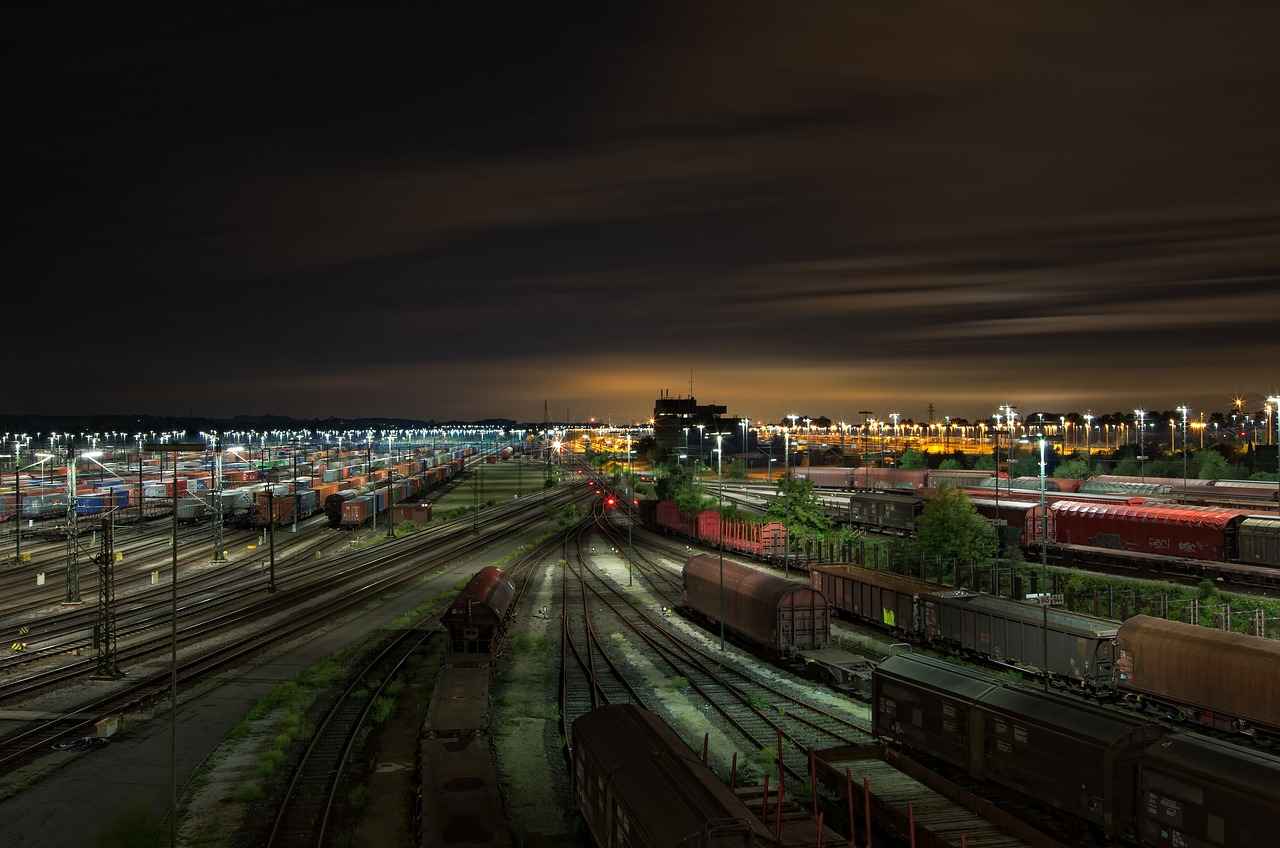
Howrah Railway Station: A Cultural Hub
Howrah Railway Station, one of the busiest railway stations in India, transcends its primary function of transportation to emerge as a vibrant cultural hub. This iconic station not only facilitates the movement of millions but also serves as a canvas reflecting the rich and diverse heritage of Kolkata. Through a combination of art, food, and local traditions, Howrah Railway Station offers travelers a unique glimpse into the cultural tapestry of the city.
- Art and Exhibitions: The station often hosts exhibitions featuring local artists, showcasing everything from traditional paintings to contemporary sculptures. These events not only beautify the station but also connect travelers with the local artistic community.
- Culinary Experience: The food stalls surrounding the station are a gastronomical delight, offering authentic Bengali dishes such as puchka (pani puri) and mishti doi (sweet yogurt). This culinary diversity allows passengers to savor the flavors of Kolkata without stepping far from their travel plans.
- Cultural Performances: Periodic cultural performances, including music and dance, take place at the station, enriching the travel experience and providing entertainment to waiting passengers.
Moreover, the station’s architecture itself is a reflection of Kolkata’s history, merging Gothic and Indo-Saracenic styles. The grand façade and intricate details create a backdrop that resonates with the city’s past, making it a landmark of both engineering and cultural significance.
As a focal point for both locals and tourists, Howrah Railway Station embodies the spirit of Kolkata. It is not merely a transit point but a living gallery of the city’s traditions and modernity. Whether through art, food, or cultural events, the station plays a crucial role in promoting the rich heritage of Kolkata, making it an essential part of the city’s identity.
In conclusion, Howrah Railway Station stands as a testament to the harmonious blend of transportation and culture, making it a must-visit destination for anyone looking to experience the essence of Kolkata.
Art and Culture at the Station
Howrah Railway Station is not just a bustling transit point; it is a vibrant cultural epicenter that showcases the artistic expressions of local talent. The station frequently transforms into a canvas for local artists, featuring a variety of cultural events and exhibitions that enrich the travel experience for passengers.
Throughout the year, the station hosts numerous art exhibitions that celebrate the creativity of Kolkata’s artists. These exhibitions often include paintings, sculptures, and installations that reflect the city’s rich heritage and contemporary themes. Passengers waiting for their trains can immerse themselves in the local art scene, making their travel experience more enjoyable and culturally enriching.
In addition to visual arts, Howrah Railway Station is a venue for various performing arts. Musicians and dancers often perform in the station’s public areas, captivating audiences with traditional Bengali music and dance forms. This live entertainment not only enhances the atmosphere but also provides a platform for local performers to showcase their talents.
Moreover, the station is adorned with murals and street art that narrate stories of Kolkata’s history and culture. These artistic displays serve as a reminder of the city’s vibrant spirit and its ability to blend tradition with modernity. They create a sense of place that resonates with both locals and tourists alike.
As a cultural hub, Howrah Railway Station plays a crucial role in promoting local artists and preserving the rich artistic traditions of the region. By supporting these initiatives, the station not only enhances the travel experience but also fosters a deeper appreciation for the arts among its visitors.
In conclusion, Howrah Railway Station stands as a testament to the dynamic cultural landscape of Kolkata, where art and travel converge to create a unique and memorable experience for all who pass through its doors.
Culinary Delights: Local Cuisine
Travelers at Howrah Railway Station are in for a treat as they can indulge in the authentic flavors of Bengali cuisine, which is deeply rooted in the rich cultural heritage of Kolkata. The bustling food stalls surrounding the station offer a vibrant culinary experience that captures the essence of this historic city.
As soon as one steps out of the station, the aroma of freshly cooked dishes fills the air, inviting passengers to explore a variety of local delicacies. Here are some must-try dishes:
- Puchka: A popular street food, these crispy hollow puris are filled with a spicy tamarind water, making for a refreshing snack.
- Kathi Rolls: A delicious wrap filled with spicy kebabs, vegetables, and sauces, perfect for a quick bite.
- Mishti Doi: A traditional Bengali sweet yogurt, this dessert is creamy, rich, and ideal for those with a sweet tooth.
- Fish Curry: Bengali cuisine is renowned for its fish dishes, particularly the Hilsa, which is often prepared with mustard sauce and served with steamed rice.
Each food stall not only serves delicious meals but also reflects the cultural diversity of Kolkata. The vendors often share stories about their recipes, passed down through generations, which adds a personal touch to the dining experience. This makes every visit to the food stalls not just a meal, but a journey through Kolkata’s culinary history.
Moreover, the affordability of these local dishes makes them accessible to all travelers, ensuring that anyone passing through Howrah Railway Station can savor the true taste of Bengal. Whether you are a local or a visitor, the culinary offerings around the station are sure to leave a lasting impression.
In conclusion, indulging in Bengali cuisine at Howrah Railway Station is an essential part of the travel experience, providing a delicious insight into the region’s rich culinary traditions.
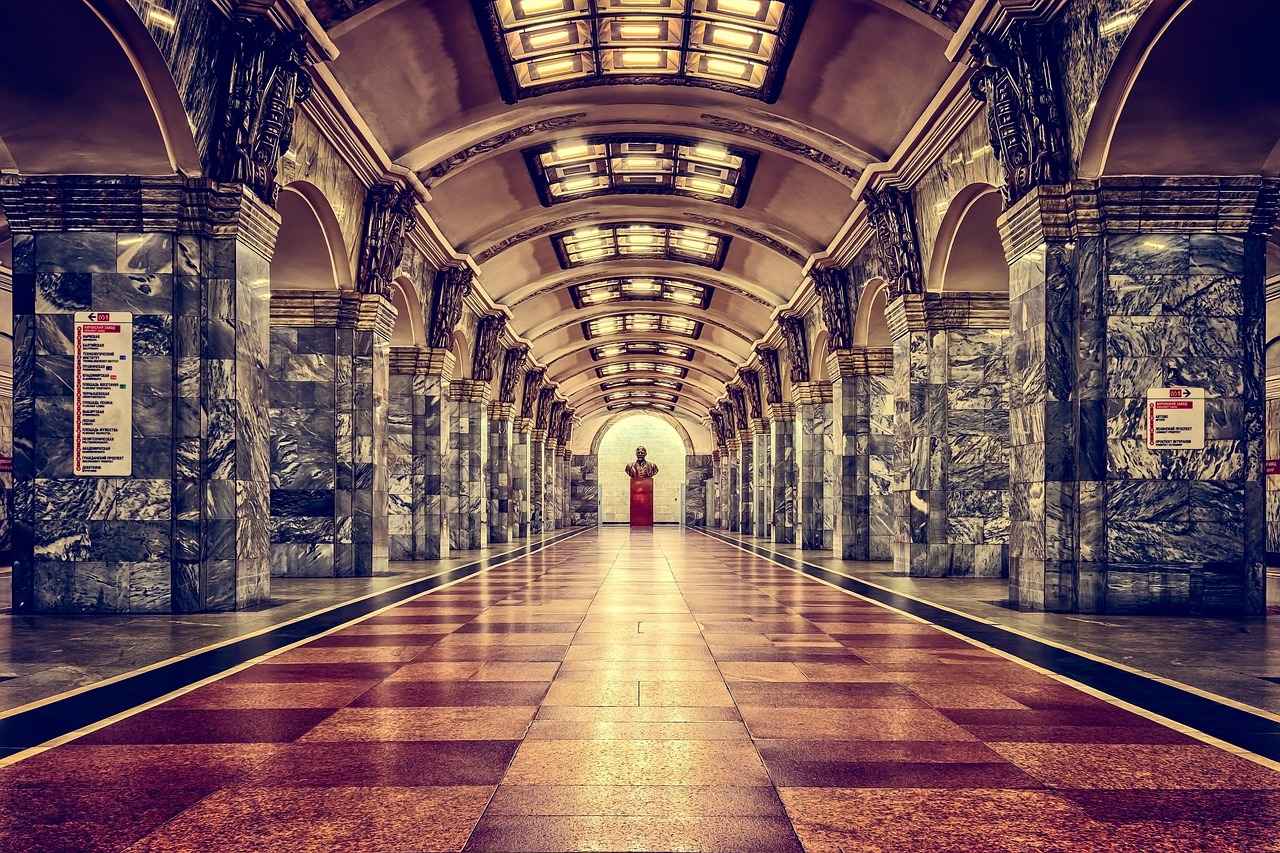
The Role of Howrah Railway Station in Indian Railways
Howrah Railway Station, located in Kolkata, is not just a transportation hub; it is a symbol of connectivity for the eastern region of India. As one of the busiest railway stations in the country, it serves as a critical junction in the Indian Railways network, facilitating the movement of millions of passengers each year. This article explores its significance, challenges, and future prospects.
The station plays a vital role in connecting the eastern region with the rest of the country. It serves as a gateway for travelers heading to various destinations, from the bustling cities of Mumbai and Delhi to the serene landscapes of the Northeast. With its strategic location, Howrah Railway Station not only supports regional travel but also boosts economic growth in Kolkata and surrounding areas.
- Passenger Traffic: Handling over a thousand trains and millions of passengers annually, Howrah Railway Station is a lifeline for daily commuters and long-distance travelers alike.
- Economic Impact: The station’s operations significantly contribute to local businesses, including hotels, restaurants, and retail shops, enhancing the economic landscape of Kolkata.
- Infrastructure Development: Continuous upgrades and maintenance are crucial to accommodate the increasing passenger flow and ensure safety and efficiency.
Despite its historical significance, Howrah Railway Station faces challenges such as overcrowding and the need for modern amenities. Addressing these issues is essential for improving the travel experience. Future development plans aim to enhance passenger facilities while preserving the station’s rich heritage.
In conclusion, Howrah Railway Station is more than just a transit point; it is a cultural and economic epicenter that reflects the vibrant spirit of Kolkata. Its ongoing evolution will ensure that it continues to serve as a vital link in India’s railway network for years to come.
Passenger Traffic and Connectivity
Howrah Railway Station is a critical hub in India’s vast railway network, handling over a million passengers each day. This staggering number highlights the station’s significance not only as a transportation point but also as a vital connector of people, cultures, and economies across the nation. Its strategic location in Kolkata makes it an essential gateway for travelers heading to various destinations in eastern India and beyond.
The station’s connectivity is unparalleled, with numerous trains departing and arriving from various regions, including long-distance express trains, local trains, and suburban services. This extensive network ensures that passengers have access to a wide range of travel options, enhancing the overall travel experience. Additionally, the station serves as a junction connecting several major railway lines, further solidifying its role in the national transportation framework.
Moreover, the station is equipped with modern facilities to cater to the needs of its vast passenger base. Features such as waiting lounges, food courts, and information kiosks contribute to a more comfortable and efficient travel experience. The presence of various amenities not only aids in passenger convenience but also supports the station’s ability to manage high traffic volumes effectively.
In recent years, the Indian Railways has undertaken several initiatives aimed at improving passenger flow and reducing congestion. These include the introduction of advanced ticketing systems and real-time information displays, which allow travelers to plan their journeys better. Furthermore, the ongoing modernization efforts are designed to enhance the infrastructure, ensuring that Howrah Railway Station remains equipped to handle the increasing passenger traffic in the future.
As a result, Howrah Railway Station stands as a testament to the evolution of railway travel in India, continuously adapting to meet the demands of millions of passengers while maintaining its historical significance and charm.
Impact on Economic Growth
The strategic location of Howrah Railway Station has played a pivotal role in the economic development of Kolkata. This bustling hub serves as a crucial link between the eastern part of India and the rest of the country. By facilitating the smooth movement of goods and passengers, the station has become an essential component of the region’s trade and commerce.
Firstly, the station’s proximity to major industrial areas and markets has made it a vital conduit for transporting raw materials and finished products. This has not only boosted local businesses but has also attracted investments from various sectors, including manufacturing, textiles, and technology. The ease of access to transportation has encouraged companies to set up operations in Kolkata, further enhancing the economic landscape.
Furthermore, the station significantly contributes to the employment rate in the region. With millions of passengers passing through annually, numerous jobs have been created in areas such as retail, hospitality, and logistics. This influx of employment opportunities has led to improved living standards for many families in the vicinity.
Additionally, Howrah Railway Station serves as a cultural melting pot, attracting tourists and travelers from across the nation. This influx of visitors not only stimulates the local economy but also promotes the rich heritage and culture of Kolkata. Local artisans and vendors benefit from the increased foot traffic, allowing them to showcase and sell their products.
In conclusion, the impact of Howrah Railway Station on Kolkata’s economic growth is profound. Its strategic location facilitates trade, creates job opportunities, and promotes cultural exchange, making it an indispensable asset to the city and its ongoing development.
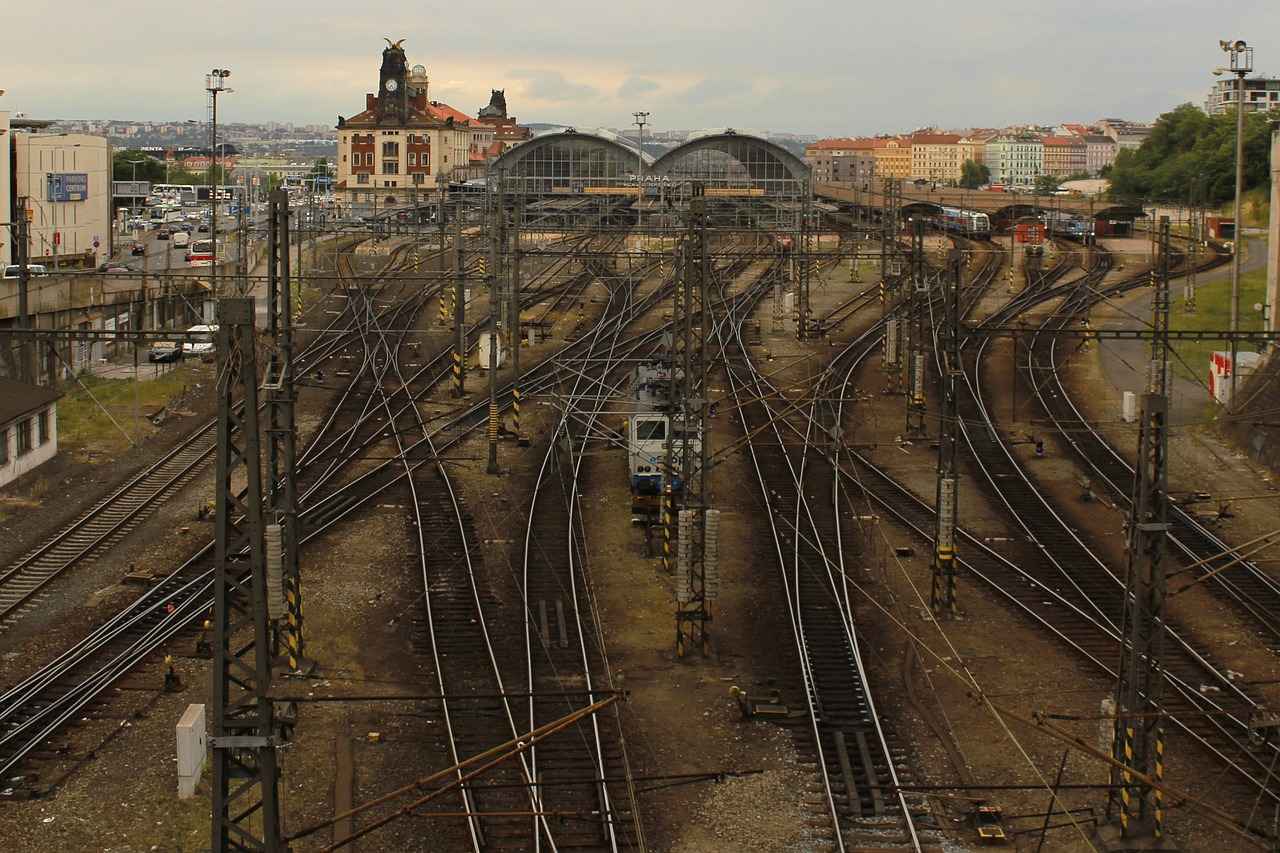
Challenges and Future Developments
Howrah Railway Station, a historic landmark in India, is currently facing a myriad of challenges that threaten its operational efficiency and passenger experience. Despite its historical significance and architectural grandeur, the station grapples with issues such as overcrowding, inadequate infrastructure, and the need for modern amenities. These challenges have initiated ongoing discussions among stakeholders regarding the station’s future developments.
Overcrowding: A Persistent Issue
With millions of passengers traversing through its platforms annually, overcrowding has become a significant concern. During peak hours, the station experiences an influx of travelers that far exceeds its capacity. This not only causes discomfort for passengers but also raises safety concerns. Addressing this issue is critical for enhancing the overall travel experience.
Infrastructure Maintenance: A Growing Need
The station’s infrastructure requires urgent attention. Many facilities are outdated and in need of repair, which hampers efficiency and safety. Regular maintenance is essential to ensure that the station can handle the increasing number of trains and passengers. Upgrading facilities such as waiting areas, restrooms, and ticket counters is vital for improving passenger satisfaction.
Modernization Plans: Balancing History and Progress
To tackle these challenges, modernization plans are in the pipeline. These initiatives aim to enhance passenger amenities while preserving the station’s historical character. Proposed upgrades include the installation of digital information boards, improved signage, and enhanced security measures. Such developments are designed to meet the needs of contemporary travelers while respecting the station’s rich heritage.
Community Involvement: Shaping the Future
Engaging with the local community is crucial for the station’s development. Feedback from frequent travelers and local residents can provide valuable insights into necessary improvements. Collaborating with community stakeholders will ensure that the upgrades align with the needs and expectations of those who use the station regularly.
In conclusion, while Howrah Railway Station faces significant challenges, ongoing discussions and planned developments offer a path forward. By addressing overcrowding, enhancing infrastructure, and involving the local community, the station can continue to serve as a vital transportation hub while honoring its historical legacy.
Modernization Efforts
at Howrah Railway Station are essential to meet the evolving needs of today’s travelers while ensuring the preservation of its historical character. As one of India’s busiest railway hubs, it is crucial to enhance passenger amenities without compromising the station’s architectural integrity.
The modernization plans focus on several key areas:
- Passenger Amenities: Upgraded waiting areas, clean restrooms, and enhanced signage are part of the initiative to improve the overall travel experience. Comfortable seating and better accessibility for differently-abled individuals are also prioritized.
- Technological Integration: The introduction of digital ticketing systems, real-time train tracking displays, and Wi-Fi connectivity aims to streamline operations and provide passengers with timely information.
- Safety Measures: Enhanced security protocols, including CCTV surveillance and increased staff presence, are being implemented to ensure passenger safety.
- Preservation of Historical Elements: While modernizing, efforts are being made to retain the station’s iconic features, such as its grand façade and intricate architectural details, ensuring that the character of the station is not lost amidst the upgrades.
Community engagement plays a vital role in this modernization process. Feedback from local residents and frequent travelers is being actively sought to tailor improvements that genuinely enhance the passenger experience. This collaborative approach not only fosters a sense of ownership among the community but also ensures that the upgrades align with the needs of the users.
In conclusion, the modernization efforts at Howrah Railway Station are designed to create a more efficient and comfortable travel environment while respecting its rich heritage. Balancing modern needs with historical preservation is a challenging yet rewarding endeavor, promising a brighter future for one of India’s most significant railway stations.
Community Engagement and Feedback
are essential components in the ongoing development and enhancement of Howrah Railway Station. The station, which serves millions of passengers each year, must continuously adapt to the changing needs of its users. By actively involving the local community, the station can gather invaluable insights that inform future improvements and initiatives.
Engagement with local residents, businesses, and frequent travelers fosters a sense of ownership and pride in the station. This collaboration can lead to a variety of benefits, including:
- Understanding Passenger Needs: By conducting surveys and hosting community meetings, station management can identify specific areas where services can be improved, such as accessibility, safety, and amenities.
- Encouraging Local Participation: Involving local artists and cultural organizations in events at the station can enhance its role as a cultural hub, showcasing the rich heritage of Kolkata.
- Feedback on Infrastructure: Regularly collecting feedback on the station’s infrastructure helps prioritize maintenance and modernization efforts, ensuring that the facility remains functional and welcoming.
- Building Partnerships: Collaborating with local businesses can lead to mutually beneficial initiatives, such as promoting local cuisine and crafts within the station, enhancing the travel experience.
Furthermore, community engagement can help to build trust and transparency between the station’s management and its users. When passengers feel heard and valued, they are more likely to support initiatives aimed at improving the station. This positive relationship can lead to a more vibrant and efficient transportation hub that meets the evolving demands of the community.
In conclusion, the importance of community engagement and feedback cannot be overstated. By prioritizing these elements, Howrah Railway Station can ensure that it remains a vital part of Kolkata’s transportation network while continuing to serve the needs of its diverse user base.
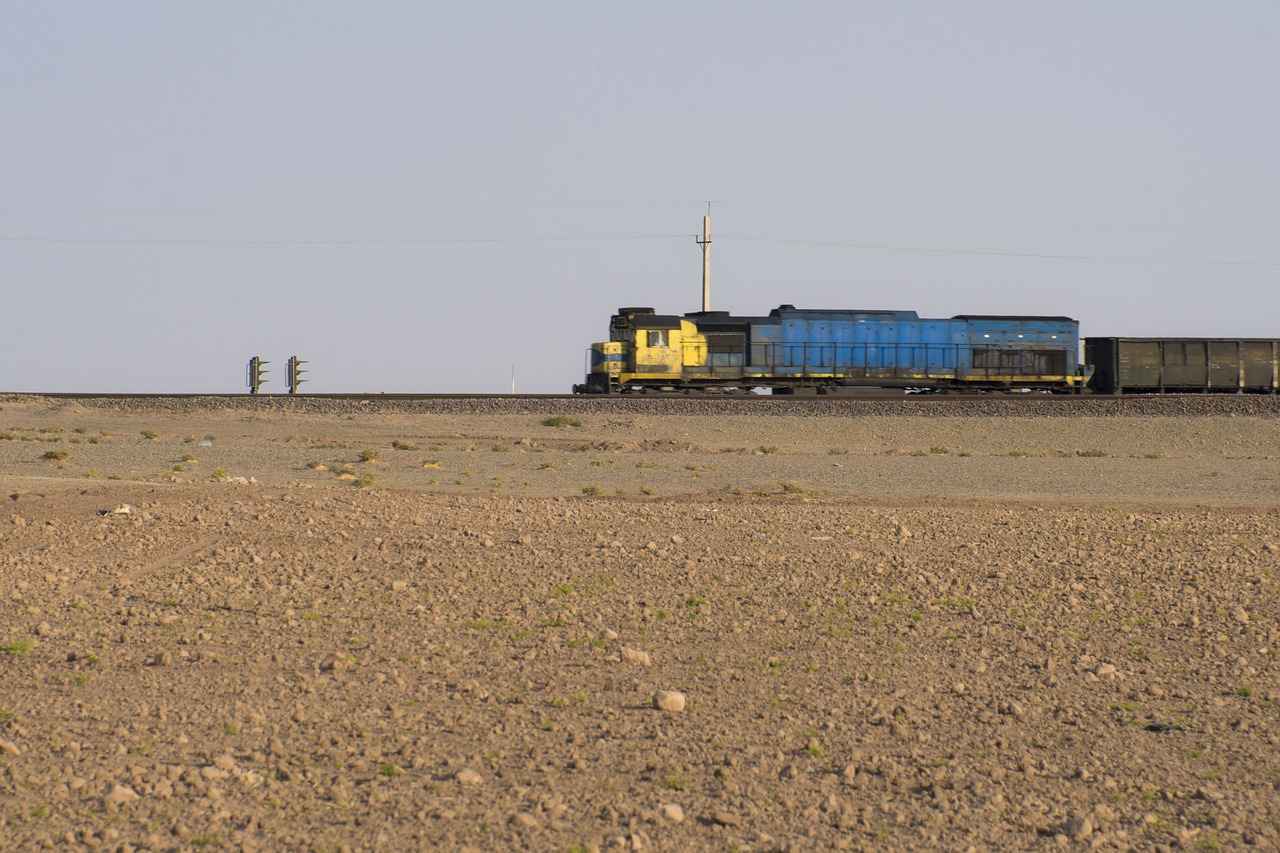
Conclusion: The Legacy of Howrah Railway Station
Exploring the Rich History of Howrah Railway Station
Howrah Railway Station, a symbol of India’s extensive railway heritage, has played a pivotal role in the evolution of transportation in the country. Established in 1854, it serves as a gateway not only to Kolkata but also to the entire eastern region of India. This bustling station is not just a transit point; it is a cultural landmark that reflects the historical and contemporary significance of the city.
The Origins of Howrah Railway Station
In its early days, Howrah Railway Station was instrumental in connecting Kolkata with various parts of India, marking a significant milestone in the development of the railway network. The station’s inception was a response to the growing need for efficient transportation, facilitating trade and travel.
Architectural Marvel: Design and Structure
The architectural design of Howrah Railway Station is a blend of Gothic and Indo-Saracenic styles, showcasing intricate details that highlight its historical significance. The grand façade, adorned with a striking clock tower, and the spacious platforms contribute to its reputation as a remarkable feat of engineering.
- Key Architectural Features: High ceilings and expansive waiting areas enhance the station’s functionality and aesthetic appeal.
- Innovative Engineering Techniques: Advanced construction methods were employed to accommodate the increasing number of passengers and trains.
Howrah Railway Station: A Cultural Hub
Beyond its role in transportation, the station serves as a vibrant cultural hub, reflecting the diverse heritage of Kolkata. Local artists often showcase their talents here, and various cultural events enrich the travel experience.
Culinary Delights: Local Cuisine
Travelers are treated to authentic Bengali cuisine at the food stalls surrounding the station, offering a taste of Kolkata’s rich culinary traditions.
The Role of Howrah Railway Station in Indian Railways
As one of the busiest railway stations in India, Howrah Railway Station plays a crucial role in connecting the eastern region with the rest of the country. It handles millions of passengers annually, highlighting its importance in the national transportation system.
Challenges and Future Developments
Despite its historical significance, Howrah Railway Station faces challenges such as overcrowding and the need for infrastructure maintenance. Ongoing modernization efforts aim to enhance passenger amenities while preserving the station’s historical character.
Community Engagement and Feedback
Engaging with the local community is essential for the station’s development, as their insights can help shape future improvements and initiatives.
Howrah Railway Station stands as a testament to India’s rich railway heritage, embodying the evolution of transportation while remaining a vibrant part of Kolkata’s cultural landscape. Its historical significance and ongoing relevance make it a vital landmark in the heart of the city.
Frequently Asked Questions
- What is the historical significance of Howrah Railway Station?
Howrah Railway Station, inaugurated in 1854, is a pivotal part of India’s railway history, connecting Kolkata with the rest of the country and marking a major milestone in transportation.
- What architectural styles are represented in Howrah Railway Station?
The station showcases a blend of Gothic and Indo-Saracenic architectural styles, featuring intricate details and a grand façade that highlight its engineering excellence.
- How does Howrah Railway Station contribute to Kolkata’s economy?
As one of the busiest railway stations in India, it plays a crucial role in facilitating trade and commerce, significantly boosting Kolkata’s economic development.
- What modernization efforts are being planned for the station?
Plans include enhancing passenger amenities while preserving the station’s historical character, ensuring it meets the needs of contemporary travelers and alleviates overcrowding.
- What cultural aspects can travelers experience at Howrah Railway Station?
Travelers can enjoy local art exhibitions and indulge in authentic Bengali cuisine at food stalls, reflecting the rich cultural heritage of Kolkata.
























































